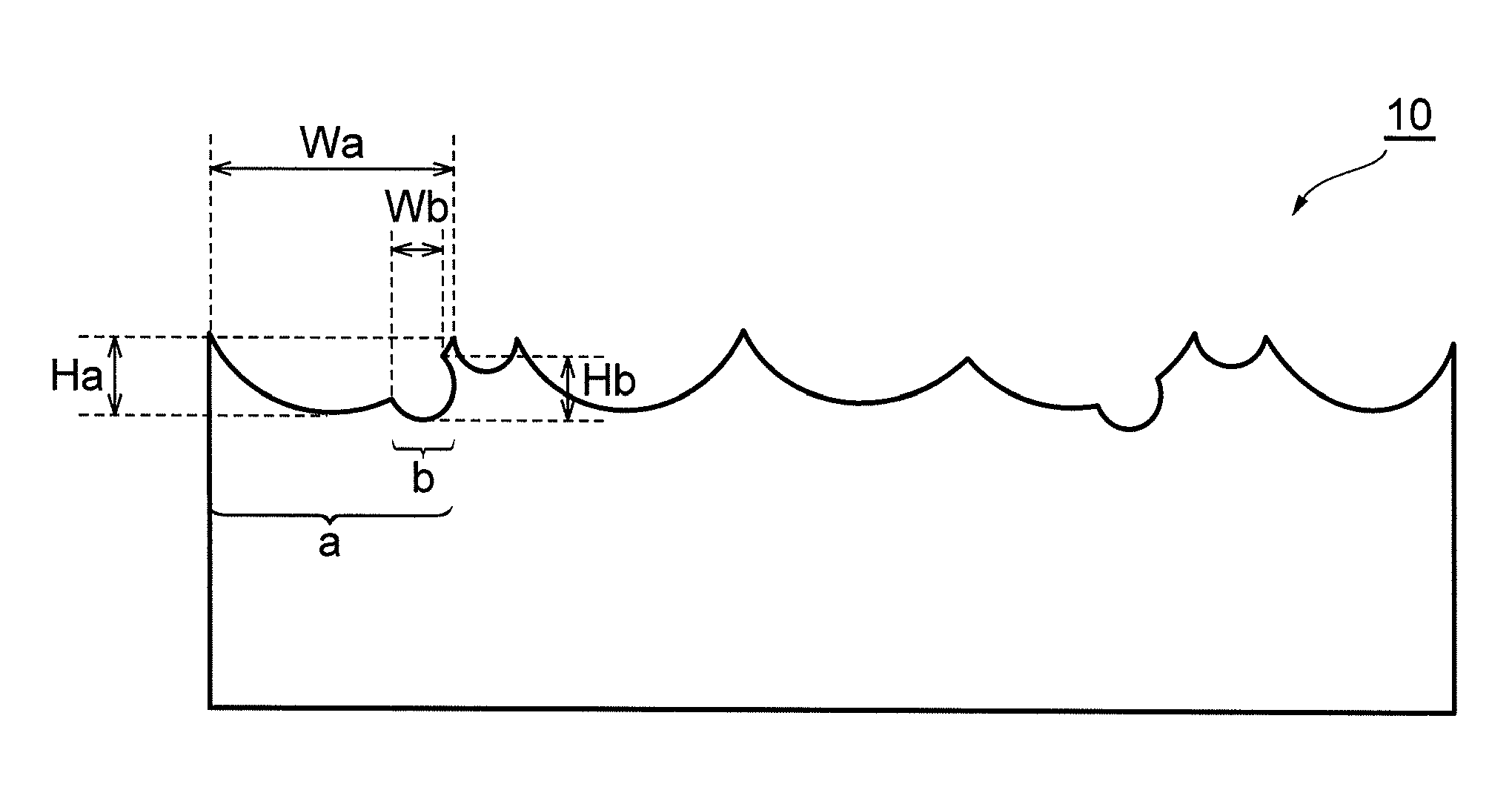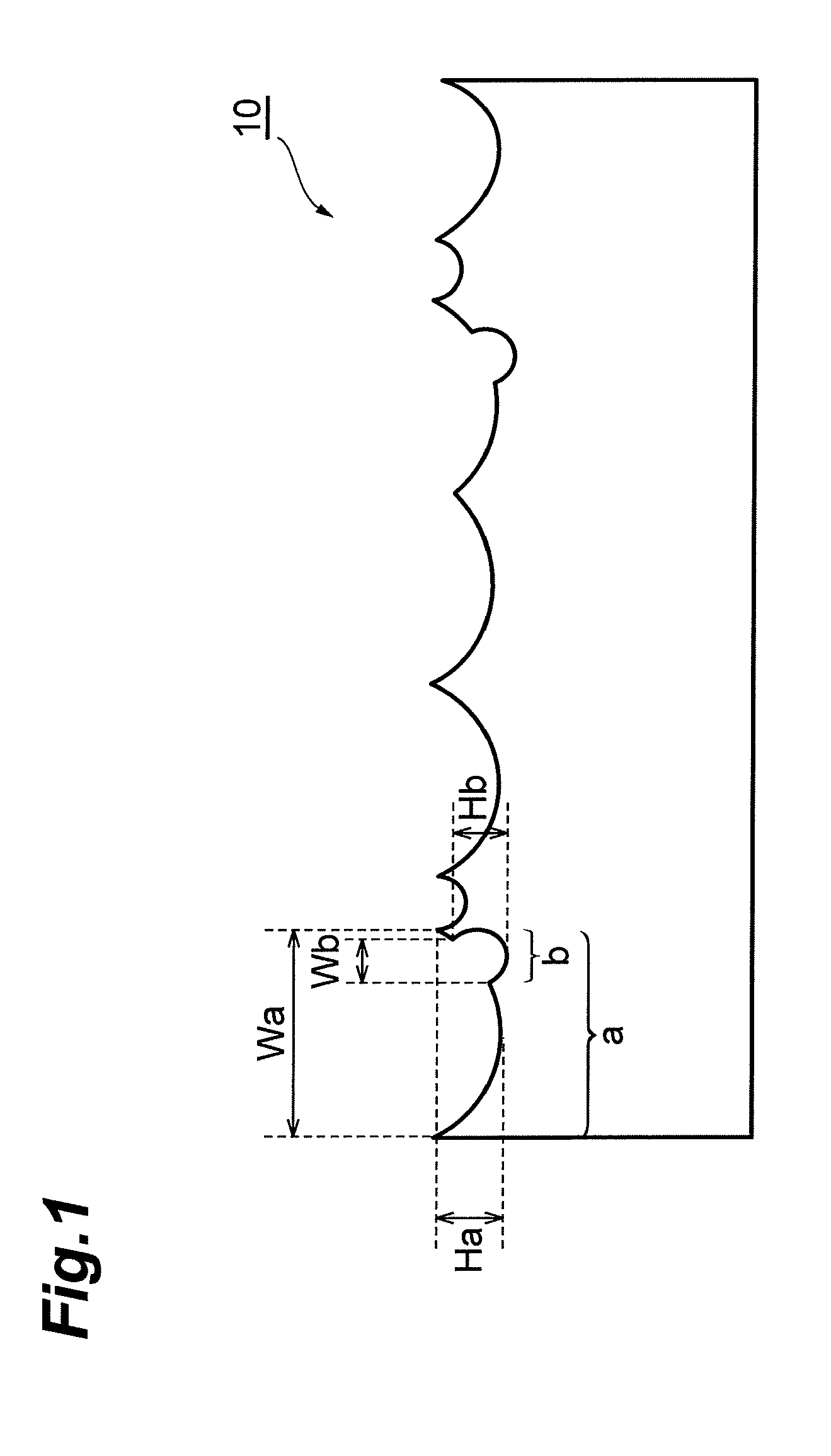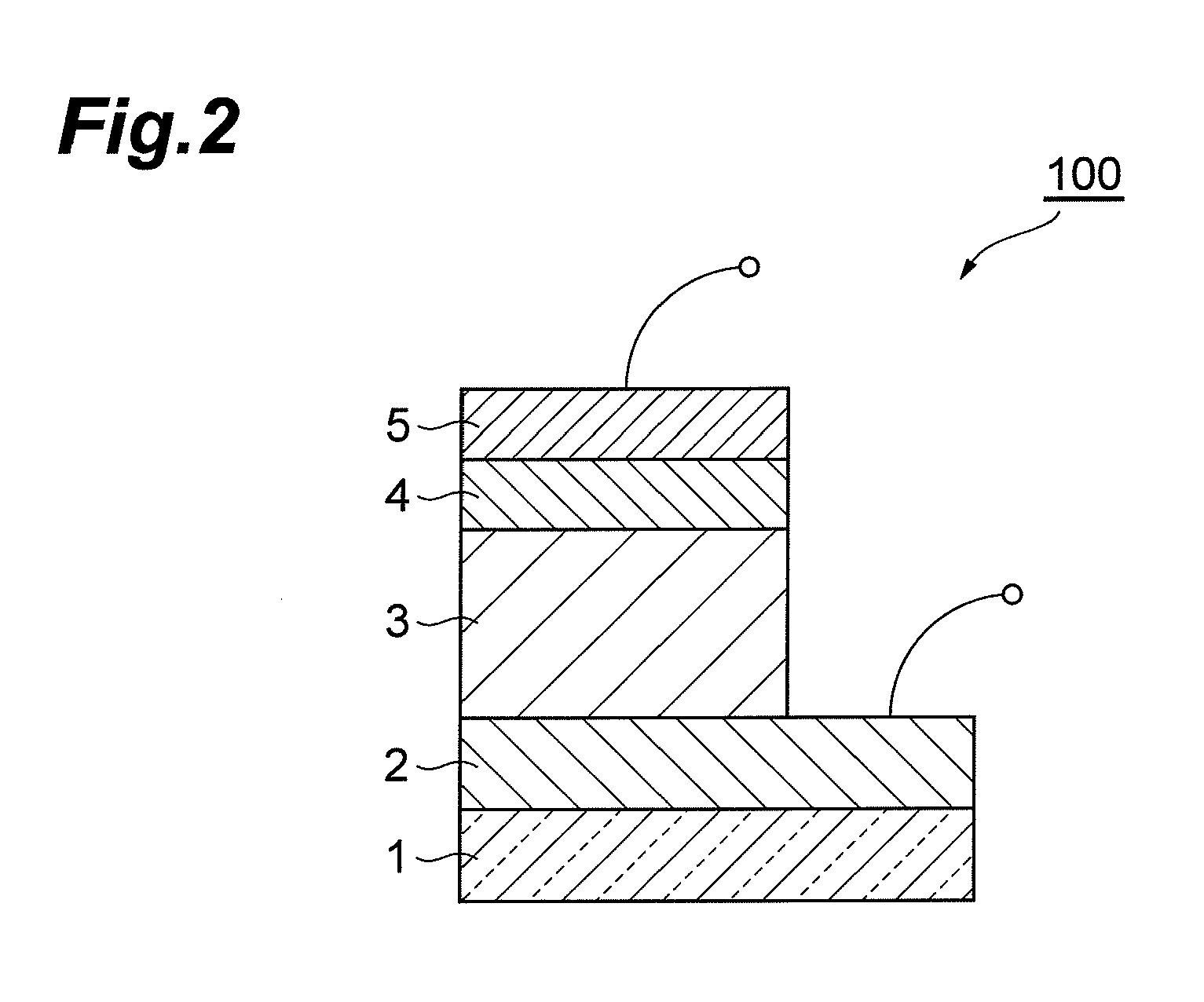Transparent conductive zinc oxide film, process for production thereof, and use thereof
a technology of transparent conductive zinc oxide and zinc oxide, which is applied in the direction of conductive layers on insulating supports, instruments, conductors, etc., can solve the problems of increasing electrical resistance, deteriorating electrical characteristics, and difficult to achieve the effect of reducing the number of conductive layers, prolonging the material selectivity, and maintaining the durability of the transparent conductive film high
- Summary
- Abstract
- Description
- Claims
- Application Information
AI Technical Summary
Benefits of technology
Problems solved by technology
Method used
Image
Examples
examples
[0069]Hereinafter, the present invention will be described in more detail with reference to Examples, but the present invention is not limited to these Examples.
[0070]The number of textures, transmittance and haze rate were recorded as average values by performing each Example five times. The value of the width / depth of the concave lenses shows an average value of values with respect to respective concave lenses observed by AFM, wherein the average value was that determined by selecting an arbitrary 25-μm2 section and determining the average of the values of the whole concave lenses present therein. Herein, it was confirmed by an X-ray diffraction measurement that the crystal structure of the formed transparent conductive film is oriented to (002) plane in the hexagonal system. The measurement conditions are as follows: X-ray source: CuKα, output of X-ray source: 40 kV, 40 mA, and scanning rate: 1° / min.
examples 1 to 8
[0071]As a sputtering target, one prepared by mixing and molding respective powders of ZnO, TiO2 and Al2O3 so that the atomic ratio satisfied those shown in Table 1, then sintering them at 1200° C., and joining the obtained sintered body to a backing plate was used. DC magnetron sputtering was performed under the sputtering conditions of a glass base plate temperature of 200° C., an oxygen partial pressure of 0.1% or less, an argon atmosphere, a sputtering pressure of 0.4 Pa and an input power of 300 W, to thereby produce a film (transparent conductive zinc oxide based film) with a film thickness of 1 nm.
[0072]This film was immersed in hydrochloric acid (liquid temperature: 40° C.) with a hydrogen ion concentration of 0.17 mol / l for seconds and then dried once. Furthermore, the etching was performed two times for 5 seconds, that is, etching was performed for seconds in total, to thereby carry out the surface treatment (Table 2). After such etching, the surface shape was observed by ...
example 9
[0074]A target was prepared by blending respective powders of ZnO, TiO2 and Al2O3 so that the atomic ratio satisfied those shown in Table 1, and subjected to the same film formation, surface treatment and evaluation as in Example 1. Herein, the solution for use in etching was a mixed solution of phosphoric acid / acetic acid (1:1=mol / mol) in which the hydrogen ion concentration was 0.05 mol / l. The results are shown in Tables 3 and 4.
PUM
| Property | Measurement | Unit |
|---|---|---|
| Temperature | aaaaa | aaaaa |
| Length | aaaaa | aaaaa |
| Area | aaaaa | aaaaa |
Abstract
Description
Claims
Application Information
 Login to View More
Login to View More - R&D
- Intellectual Property
- Life Sciences
- Materials
- Tech Scout
- Unparalleled Data Quality
- Higher Quality Content
- 60% Fewer Hallucinations
Browse by: Latest US Patents, China's latest patents, Technical Efficacy Thesaurus, Application Domain, Technology Topic, Popular Technical Reports.
© 2025 PatSnap. All rights reserved.Legal|Privacy policy|Modern Slavery Act Transparency Statement|Sitemap|About US| Contact US: help@patsnap.com



